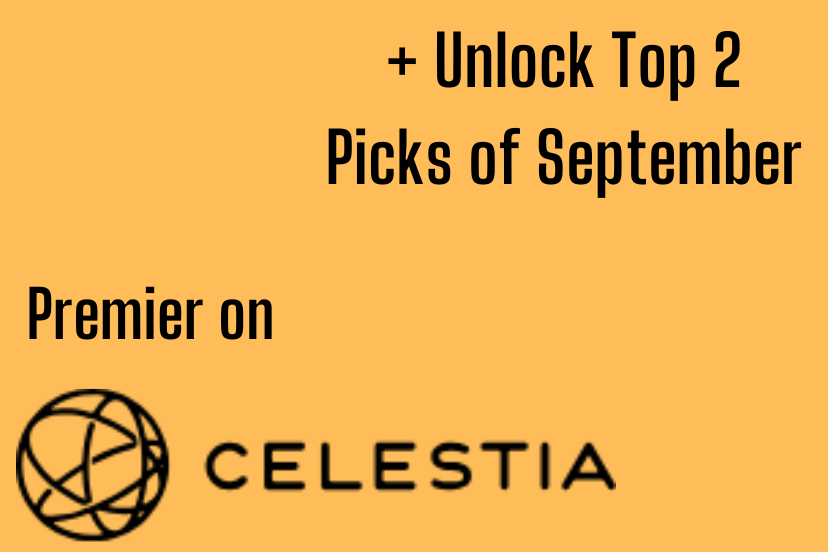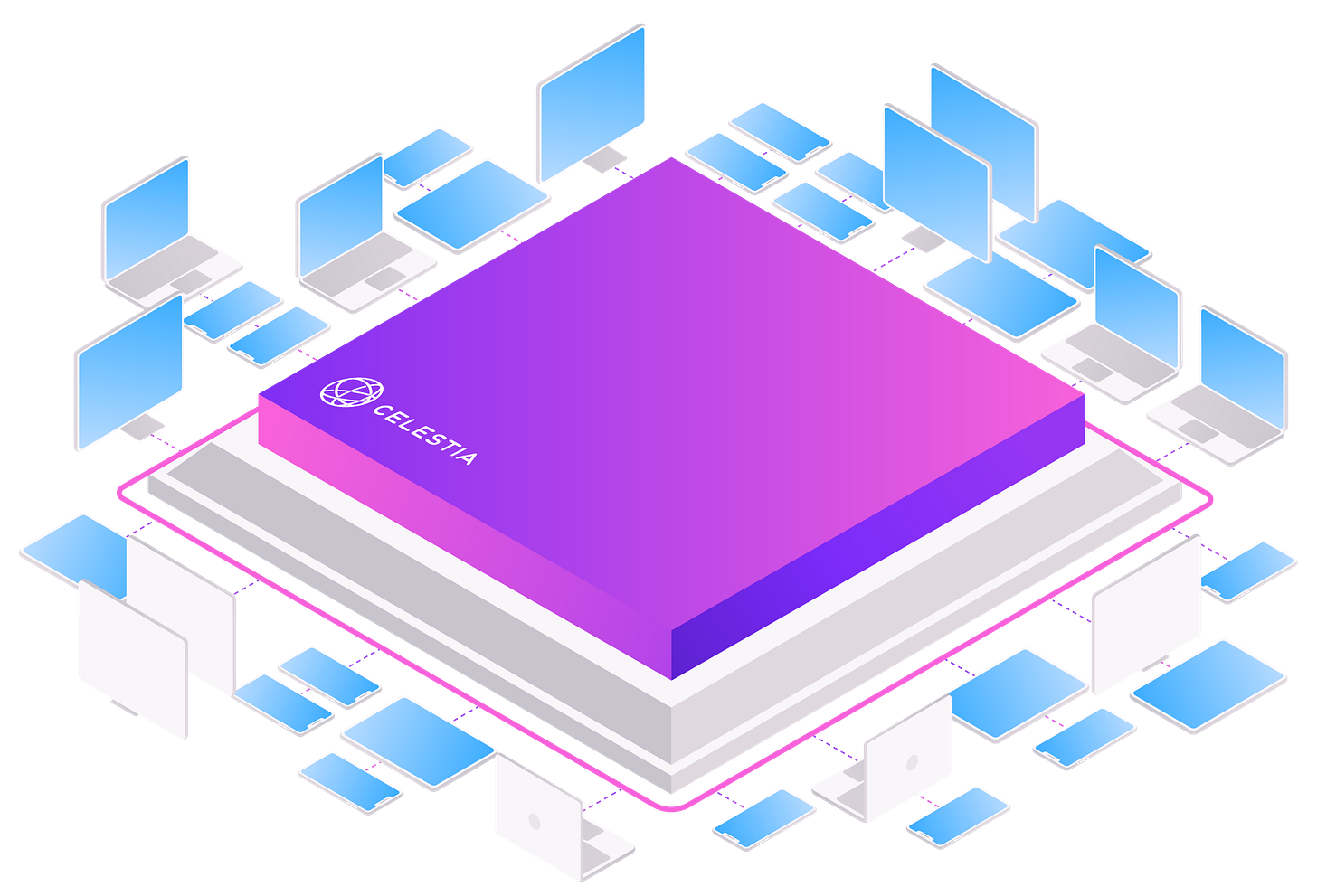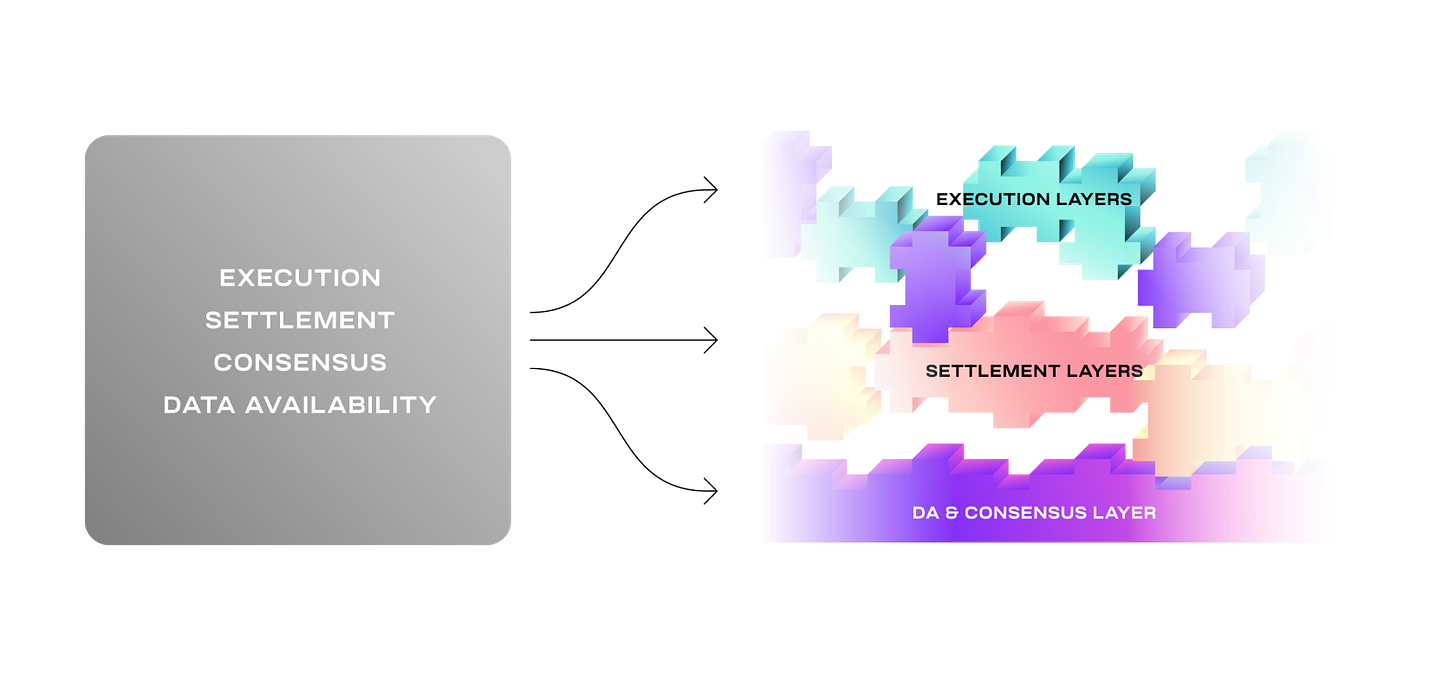The current state of the crypto market reflects ongoing volatility but remarkable technological advancements, particularly in blockchain scalability. Celestia is pioneering a modular blockchain architecture, offering revolutionary data availability solutions to overcome the limitations of traditional monolithic chains. As the first data availability-focused blockchain, Celestia separates data availability from transaction execution, streamlining the process for blockchain creation and decentralized apps.
What is Celestia
Celestia is a modular data availability (DA) network that securely scales with the number of users, making it easy for anyone to launch their own blockchain.
Rollups and L2s use Celestia as a network for publishing and making transaction data available for anyone to download. For them, Celestia provides high-throughput DA that can be verified easily with a light node.
And by making the blockchain stack modular, anyone can launch their own blockchain without needing a validator set.
Why Celestia?
Deploy fast : Deploy your own customizable blockchain as easily as a smart contract.
Use any VM: Transform nearly any virtual machine into your own sovereign chain.
Access abundant throughput: Unlock dynamic throughput that scales with the number of users.
What is data availability and why does it matter?
Data availability answers the question, has the data for this blockchain been published? It is critical to the security of any blockchain because it ensures that anyone can inspect the ledger of transactions and verify it.
Users of a monolithic blockchain usually download all the data to check that it is available.
As blocks get bigger, it becomes impractical for normal users to download all the data meaning that they can’t verify the chain. Modular chains solve this problem by making it possible for users to verify very large blocks using a technology called data availability sampling.
Now what's data availability sampling?
Data availability sampling (DAS) is the new primitive that enables Celestia light nodes to verify DA efficiently. Instead of downloading all data, light nodes only download a tiny portion of each block.
Importantly, DAS allows Celestia to scale with the number of users (light nodes). So, as the light node network grows over time, Celestia can scale to the data throughput needed for millions of rollups without compromising on security for end users.
And what is a modular blockchain?
Modular blockchains are a new paradigm in blockchain design. Instead of one blockchain doing everything, modular blockchains specialize and optimize to perform a given function. This specialization provides breakthroughs in scalability, flexibility, and interoperability, enabling developers to build blockchain applications for mass adoption.
Celestia's Solution: Modular Blockchain for Scalability
Celestia introduces a game-changing approach by offloading data availability from nodes, which traditionally must store vast amounts of data. This allows even light nodes to validate transactions without downloading the entire ledger, solving scalability issues and optimizing performance. Celestia's modular structure separates the blockchain stack, allowing independent optimization of each layer—data availability, consensus, and execution. It employs Data Availability Sampling (DAS) and Namespaced Merkle Trees (NMTs), ensuring efficient data partitioning and security with minimal resource use.
Key Features of Celestia:
Modularity: Different layers work independently to improve scalability.
Data Availability Sampling (DAS): Enables light nodes to verify data without downloading the full block.
Security: Comparable security to full nodes with fraud/validity proofs.
Scalability: The addition of light nodes allows more efficient data handling.
Interoperability: NMTs and modular structure enable various applications and rollups to operate on Celestia.
Proof of Stake (PoS): Tailored for data availability, reducing energy use and opening access for validators.
Competitive Landscape and Market Outlook
Modular blockchain is the future of scalability, and Celestia leads in data availability solutions. However, competitors like Avail (Polygon Labs), Eigen DA, and NEAR are also advancing in this space. Celestia's partnerships with projects such as Arbitrum, Osmosis, and Neutron further strengthen its role in the blockchain ecosystem.
Celestia's Tokenomics: $TIA
Celestia’s native token, $TIA, serves multiple functions—developers use it for gas fees, data availability, and launching new blockchains. It operates under a Proof of Stake (PoS) system, enabling staking for governance and rewarding validators. With an initial supply of one billion tokens and an 8% inflation rate decreasing annually, $TIA has a long-term growth trajectory.
Recommendation
Celestia's modular architecture positions it as a leader in the next generation of blockchain technology, solving core scalability challenges and enabling faster, more efficient blockchain and dApp development. As the market grows, Celestia’s innovative solutions are likely to see broad adoption, contributing to the evolution of decentralized ecosystems.
Entry Point: $3.75
Exit Target: $6.5
Stop-Loss: $3
Two Hot Picks for September:
As we kick off September, two standout blockchain projects are creating a buzz in the crypto world. Both offer unique solutions to critical blockchain challenges like scalability and decentralized data handling.
Unlock exclusive access to in-depth analysis, entry points, and strategic insights by upgrading to our premium subscription.
Natix Network
Natix Network is building an open geospatial Intelligence network using their proprietary AI and "Internet of Cameras". NATIX’s flagship product “Drive&” uses driver assistant apps (e.g. dashcam and navigation), token incentives, computer vision AI, and smartphone cameras to crowdsource real-time data creating an open geospatial Intelligence network that rewards users for contributing. With over 100K registered drivers and nearly 40 million KM covered in only one year, NATIX is one of the fastest-growing DePIN networks globally (according to Messari’s state of DePIN 2023 report).Entry Point: $0.000950
Exit Target: $0.001
Stop-Loss: $0.0009
Aethir
Aethir is a decentralized cloud computing platform tailored specifically for gaming and Web3 projects. Its solution addresses high-performance computing demands while reducing the operational costs that centralized cloud providers impose. This scalable cloud infrastructure is particularly relevant for gaming companies aiming for decentralized, more resilient networks.Entry Point: $0.042
Exit Target: $0.1
Stop-Loss: $0.03
Disclaimer:
Crypto investments are inherently volatile and involve significant risk. This newsletter is intended for educational purposes only and does not constitute financial advice. Always conduct your own research or consult with a licensed financial advisor before making any investment decisions.
Happy Investing!






